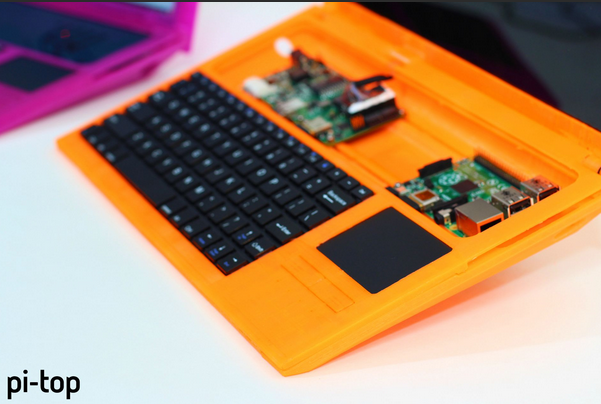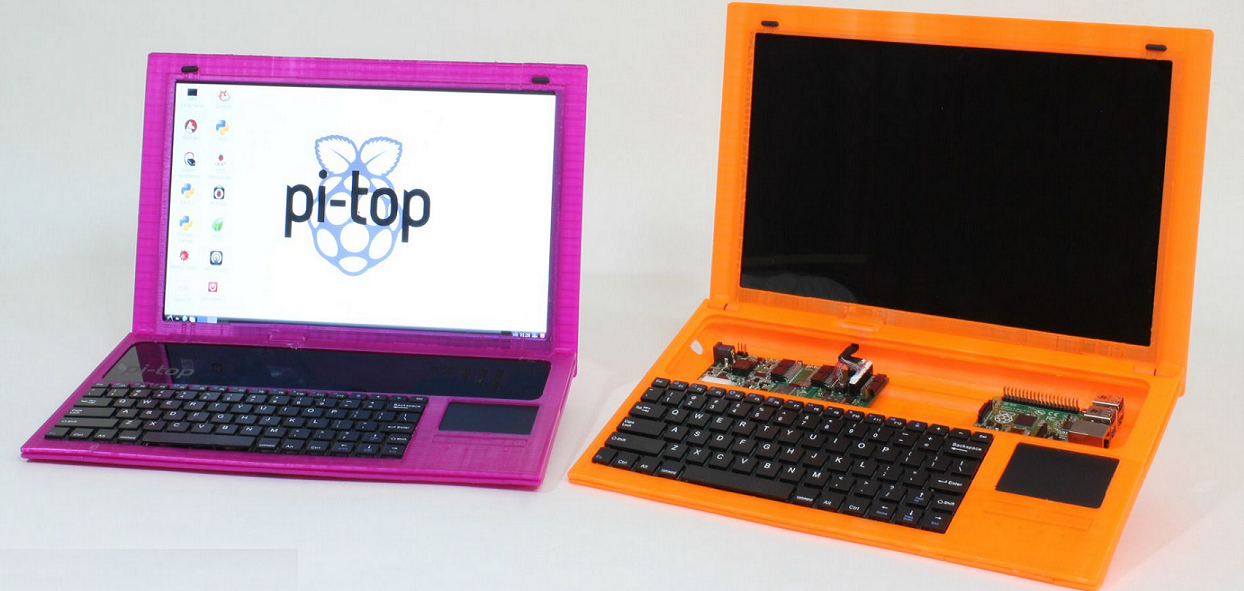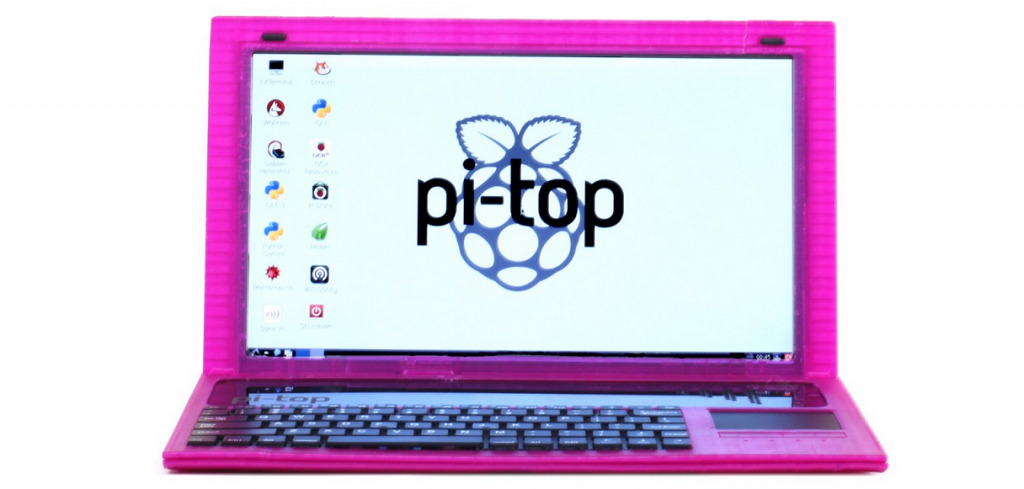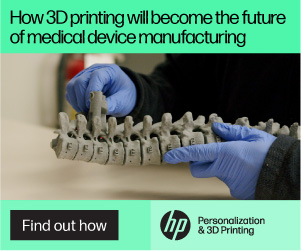 Probably one of the coolest projects we have seen in the last several months is that of the Pi-Top, a Raspberry Pi-enabled 3D printed laptop. When the Pi-Top was first unveiled back in September we were already impressed, but since then they have been working to reduce the size of the laptop, shrinking components and redesigning the 3D printable case. In October a brand new, sleeker version of of the 3D printed laptop was unveiled just in time for the launching of an Indiegogo crowdfunding campaign by the company’s founders, Ryan Dunwoody and Jesse Lozano. The campaign ended up raising over $170,000, providing more than enough capital for the company to move forward with their plans to provide a transformative educational tool to educate the public via a cool DIY 3D printing/electronic project.
Probably one of the coolest projects we have seen in the last several months is that of the Pi-Top, a Raspberry Pi-enabled 3D printed laptop. When the Pi-Top was first unveiled back in September we were already impressed, but since then they have been working to reduce the size of the laptop, shrinking components and redesigning the 3D printable case. In October a brand new, sleeker version of of the 3D printed laptop was unveiled just in time for the launching of an Indiegogo crowdfunding campaign by the company’s founders, Ryan Dunwoody and Jesse Lozano. The campaign ended up raising over $170,000, providing more than enough capital for the company to move forward with their plans to provide a transformative educational tool to educate the public via a cool DIY 3D printing/electronic project.
Here we are a few months removed from the company’s Indiegogo success, and we just got word that a remake of the 3D printable laptop is under development. In what is the third official version of the Pi-Top, several major changes have been made to both its functionality and its design.
Back in November the company unveiled a much thinner design to the body of the laptop. This sleek design has even been made sleeker, as Version 3 is 30% thinner than the Version 2 model. This equates to faster print times for those who plan on printing the case rather than using the injection molded cases which come with the kit.
The biggest functionality change in this latest version is the addition of a larger trackpad with integrated cantilever spring mouse buttons. The finished Pi-Top now provides users with the ability to get tactile feedback via mouse buttons which are not integrated inside the trackpad, but instead beneath it.
“One of the most useful modifications from the old Pi-Top prototype to the new one is the addition of left and right mouse buttons,” explained the company on a Reddit post.
“Essentially, there is a PCB (Printed Circuit Board) fixed to the underside of the plastic case which has two tactile button switches mounted on it – pressing these buttons sends a left or right click command to the computer.”
The part of each mouse button that is to be pressed will be at the free end of the cantilever, created with just enough thickness so that they spring back up once pressed, but are also easy to press.
“After a few test prints, we have settled on what we think is a much more responsive mouse click than most laptops can offer — mouse button inserts simply can’t compete (rubber is generally used in current laptops to give the ‘springyness’, and it wears out over time),” explained the company.
Another great feature about this latest version of Pi-Top is the ability for users to create and insert their own printed circuit boards to modify their laptop via its modularized PCB rail. Those looking to print their own circuit boards will need to follow Pi-Top’s open source design specifications pertaining to size and communications.
The latest Pi-Top kits will be released shortly and priced at $299 with the Raspberry Pi board included, or $264.99 without. Let us know what your thoughts are on this latest version. Discuss in the Pi-Top forum thread on 3DPBcom.
Subscribe to Our Email Newsletter
Stay up-to-date on all the latest news from the 3D printing industry and receive information and offers from third party vendors.
You May Also Like
Why Corrosive Resistant Materials Are Important to the Success of 3D Printing Across Industries
The adoption of additive manufacturing (AM) is accelerating across many major industries. As this technological shift unfolds, the importance of corrosion resistance has emerged as a challenge for 3D printing...
America Makes Announces IMPACT 2.0: $6.6M in New 3D Printing Funding
America Makes, the Manufacturing Innovation Institute (MII) based in Youngstown, Ohio, has announced IMPACT (Improvement in Manufacturing Productivity via Additive Capabilities and Techno-Economic Analysis) 2.0, a project call which will...
3D Printing Webinar and Event Roundup: April 14, 2024
We’re starting off the week’s 3D printing webinars and events at ASTM AMCOE’s 11th Snapshot Workshop and MACH Exhibition. Stratasys continues its advanced training courses, SME is holding a virtual...
AMUK Welcomes Airframe Designs as British 3D Printing Industry Grows
While the UK is not the hub for 3D printer and materials manufacturers as other nations, the country continues to excel at the research, development, and application of additive manufacturing...

































